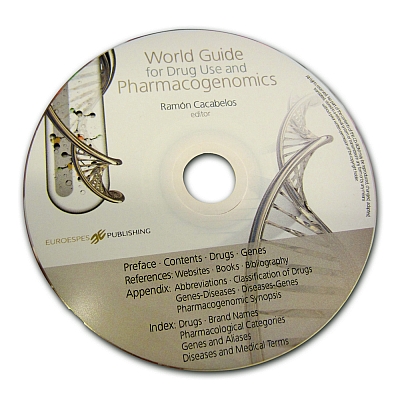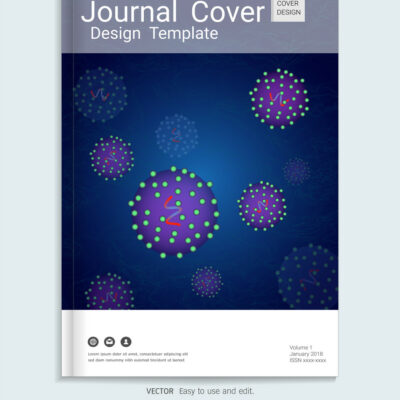Descripción
The World Guide for Drug Use and Pharmacogenomics (WGPGx) is a multidisciplinary, systematic exercise to put in order a myriad of data organized in selected databases and thousands of reports scattered throughout the international literature on genetics, genomics, pharmacology, drug metabolism, therapeutics, and pharmacogenomics, to provide the reader (physicians, geneticists, pharmacists, researchers, health professionals, regulators, etc.) with a body of practical information which is not available in other publications as a whole.
The Guide is divided into 5 main parts: (i) Drugs, (ii) Genes, (iii) References, (iv) Appendix and (v) Index.
The section of Drugs includes 1,395 drugs classified in alphabetical order from A to Z. Each entry contains the following headings: Drug Name; Brand Names [in 27 European countries (Austria, Belgium, Bulgaria, Cyprus, Czech Republic, Denmark, Estonia, Finland, France, Germany, Greece, Hungary, Ireland, Italy, Latvia, Lithuania, Luxembourg, Malta, Netherlands, Poland, Portugal, Romania, Slovakia, Slovenia, Spain, Sweden, UK), North America (Canada and USA), Latin America (Argentina, Brazil, Mexico), and Asia (Japan)]; Drug Combinations; Chemistry; Pharmacological Category; Mechanism of Action; Therapeutic Use; Unlabeled Use; Pregnancy and Lactation Implications; Contraindications; Warnings and Precautions; Adverse Reactions (cardiovascular, central nervous system, dermatologic, endocrine and metabolic, gastrointestinal, genitourinary, hematologic, hepatic, local, neuromuscular and skeletal, renal, respiratory, miscellaneous); Pharmacogenetics (genotypes of risk, genes involved in drug metabolism, condition of substrate, inhibitor or inducer, when appropriate); Drug Interactions; Nutrition/Nutraceutical Interactions; Dosage; Pharmacokinetics and Pharmacodynamics (absorption, distribution, protein binding, metabolism, bioavailability, half-life, time to peak, excretion); Special Considerations (diet, age, sex, monitoring parameters).
The section of Genes includes 447 genes of relevance in pharmacogenomics. Each entry contains the following headings: Gene Name; Alternative Names; Alternative Symbols; Locus; Codes (OMIM, PharmGKB); Gene Structure; RNA; Protein; Function; Related Diseases (list of diseases investigated; in bold face those diseases potentially associated); Related Drugs (list of drugs investigated; when appropriate, major substrates, minor substrates, strong inhibitors, moderate inhibitors, weak inhibitors, and inducers); Animal Models; Allelic Variants; Selected SNPs; Evolution; Genomics and Pharmacogenomics (description of relevant findings in genomics and pharmacogenomics according to the international literature); Drug-Gene Interactions.
The section of References includes two categories: (i) Websites and International Databases, and (ii) 17,947 References alphabetically classified by author and by gene. The List of References is included in the attached CD-ROM. Due to the length of said list of references, it has been omitted in the book. The Guide’s authors have respected the data and opinions of the referenced original authors where contradictory results on drugs or genes are reported. Data included in the WGPGx have been strictly extracted from the referenced authors, avoiding personal interpretations. Approximately 100,000 references have been reviewed, of which 17,947 were finally selected for this edition.
The Appendix includes 4 sub-sections: (i) Classification of Drugs, (ii) Genes-Diseases (a list of genes associated with specific diseases), (iii) Diseases-Genes (a list of diseases associated with specific genes), and (iv) Pharmacogenomic synopsis (a list of internationally-used drugs with those genes potentially involved in the metabolism of each drug).
The Index contains approximately 52,000 entries divided into 5 sections: (i) Drugs (approx. 7,750 entries), (ii) Brand names (approx. 31,750 entries), (iii) Pharmacological categories (1,891 entries), (iv) Genes (approx. 4,450 entries), and (v) Diseases (approx. 9,200 entries).
As Editor-in-Chief of the 1st Edition of the World Guide for Drug Use and Pharmacogenomics, in 3 formats (Book, CD-ROM, and EuroPharmaGenics Database), it is a pleasure for me to present this monumental work to the scientific and medical communities from whom I would greatly appreciate to receive any feedback and constructive criticism in order to improve the quality and accuracy of the information released in this volume. I would like to thank all referenced authors and the entities responsible for the databases from which we necessarily obtained the documentation bulk, later to be assembled in this Guide. The final goal of this incipient, extensive, and systematic work is to efficiently serve our patients, by improving diagnostic procedures with the aid of genomic tools, personalizing treatments and minimizing undesirable drug effects by using pharmacogenomic strategies, and, in the end, optimizing therapeutics for a better healthcare model in our society.










